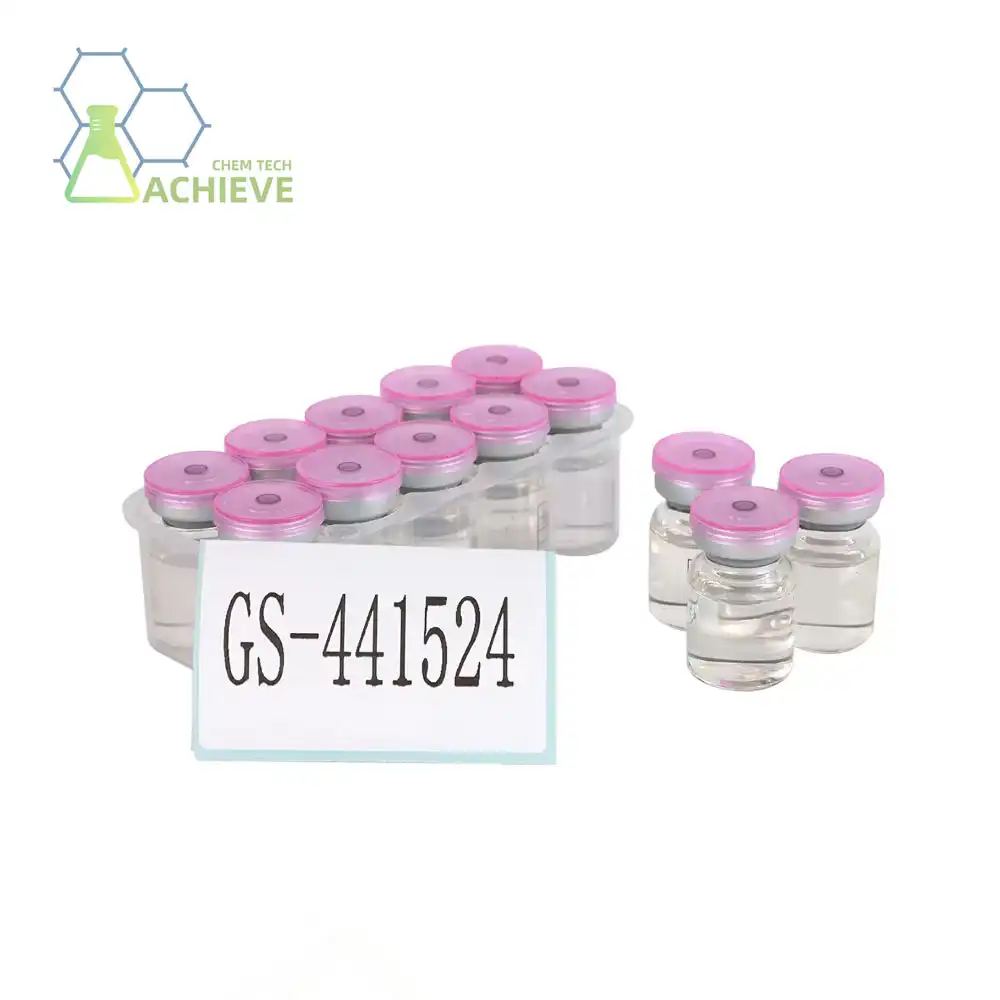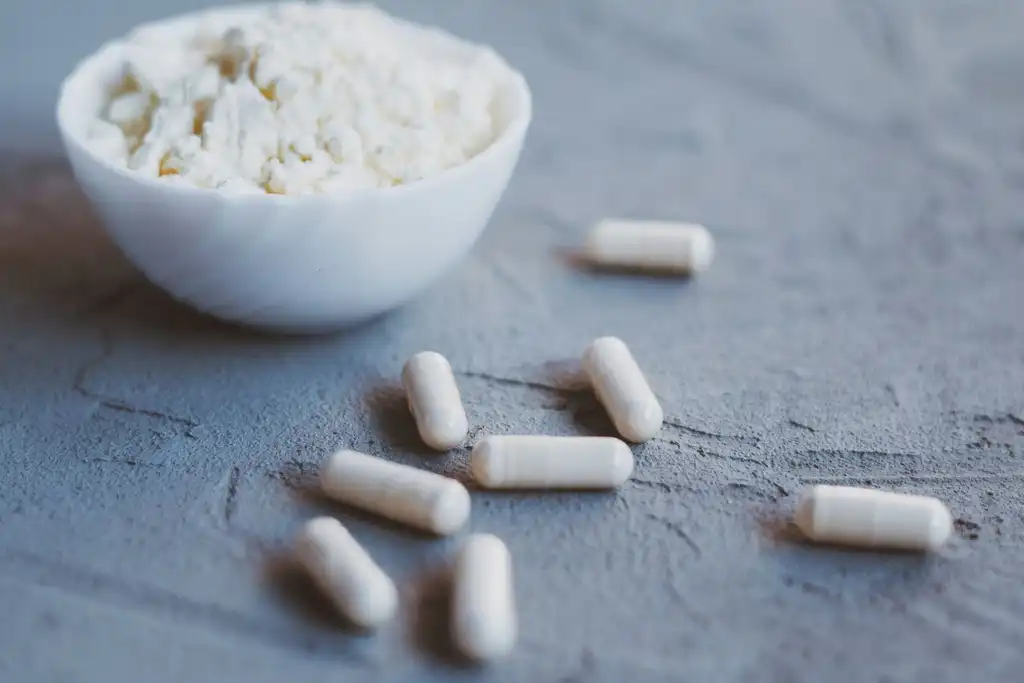How to solve the sterility problem when preparing GS-441524?
Ensuring sterility during the preparation of GS-441524 is crucial for maintaining its efficacy and safety. This comprehensive guide will explore best practices, methods, and common pitfalls in achieving sterility assurance for this important compound. Whether you're a pharmaceutical researcher or involved in the production of GS-441524, this article will provide valuable insights to help you maintain the highest standards of sterility.
Product: https://www.bloomtechz.com/oem-odm/injection/gs-441524-fip.html
 |
 |
 |
What Sterilization Methods Are Best for GS-441524 Preparation?
When it comes to sterilizing GS-441524, several methods can be employed to ensure the compound remains free from contamination. Each method has its advantages and considerations, making it essential to choose the most appropriate technique for your specific application.
Aseptic Processing: The Gold Standard
Aseptic processing is often considered the gold standard for sterilizing sensitive compounds like GS-441524. This method involves maintaining a sterile environment throughout the entire production process, from raw materials to final packaging. Key components of aseptic processing include:
- HEPA-filtered air systems
- Sterile equipment and containers
- Stringent personnel training and hygiene protocols
- Continuous environmental monitoring
Aseptic processing is particularly beneficial for GS-441524 as it minimizes the risk of contamination without subjecting the compound to potentially damaging sterilization techniques.
Gamma Irradiation: A Powerful Alternative
Gamma irradiation is another effective method for sterilizing GS-441524. This technique uses high-energy gamma rays to eliminate microorganisms and spores. Benefits of gamma irradiation include:
- High penetration power
- No residual radioactivity
- Ability to sterilize pre-packaged products
However, it's crucial to validate the impact of gamma irradiation on GS-441524's chemical structure and stability before implementing this method.
Does Filtration or Autoclaving Work Better for GS-441524 Sterility?
Sterilization is a critical step in pharmaceutical manufacturing to ensure product safety and efficacy. For heat-sensitive compounds like GS-441524, selecting the appropriate sterilization method is essential to maintain stability and potency. Filtration and autoclaving are two widely used techniques, but their suitability for GS-441524 differs significantly.
|
|
|
Sterile Filtration: A Gentle Approach
Sterile filtration is particularly well-suited for GS-441524 due to its non-thermal nature. This process involves forcing the solution through a microporous membrane (typically 0.22 µm or smaller), physically removing bacteria, fungi, and other microorganisms without exposing the compound to high temperatures. Key advantages of this method include:
- Preservation of compound integrity – Since no heat is applied, the risk of thermal degradation is minimized.
- High microbial retention – Properly selected filters can effectively eliminate contaminants while allowing the active pharmaceutical ingredient (API) to pass through.
- Compatibility with aseptic processing – Filtration can be seamlessly integrated into sterile filling operations, making it ideal for injectable formulations.
However, filter compatibility must be verified to ensure the membrane material does not adsorb GS-441524 or introduce leachables that could affect product quality.
Autoclaving: Proceed with Caution
Autoclaving, which relies on steam sterilization at high temperatures (typically 121°C for 15-20 minutes), is generally unsuitable for GS-441524. The extreme heat can lead to:
- Chemical degradation – The compound may undergo hydrolysis or other structural changes, reducing its potency.
- Loss of efficacy – Even partial degradation could compromise therapeutic performance, particularly for precision antiviral treatments.
- Batch inconsistency – Variations in autoclave conditions (temperature, pressure, exposure time) may result in inconsistent product quality.
- If autoclaving is unavoidable (e.g., for equipment sterilization in GS-441524 production), rigorous stability testing must confirm that the API remains unaffected. In most cases, however, sterile filtration remains the safer and more reliable choice.
If autoclaving must be considered, extensive stability studies should be conducted to determine if GS-441524 can withstand the process without significant degradation.
GS-441524 Sterility Assurance: Best Practices and Common Pitfalls
Ensuring the sterility of GS-441524 requires a comprehensive approach that goes beyond the sterilization method itself. Implementing best practices and avoiding common pitfalls are crucial for maintaining consistent sterility assurance.
Best Practices for GS-441524 Sterility
To maximize sterility assurance for GS-441524, consider implementing the following best practices:
- Develop and validate a robust cleaning and sanitization program for all equipment and surfaces
- Implement a rigorous environmental monitoring system to detect potential contaminants
- Establish strict personnel gowning and hygiene protocols
- Utilize single-use disposable components where possible to minimize cross-contamination risks
- Conduct regular sterility testing on finished products
- Implement a comprehensive quality management system to ensure consistent adherence to sterility protocols
Common Pitfalls to Avoid
Be aware of these common pitfalls that can compromise the sterility of GS-441524:
- Inadequate operator training leading to breaches in aseptic technique
- Overlooking the potential for biofilm formation in equipment and transfer lines
- Failing to validate sterilization methods specifically for GS-441524
- Neglecting to consider the impact of excipients on overall product sterility
- Underestimating the importance of proper storage conditions for maintaining sterility
Innovative Approaches to GS-441524 Sterility
As technology advances, new approaches to ensuring sterility are emerging. Some innovative techniques that may be applicable to GS-441524 include:
- Continuous flow chemistry for in-line sterilization
- Advanced isolator technology for aseptic processing
- Real-time microbial detection systems
- Machine learning algorithms for predicting sterility risks
These cutting-edge approaches may offer improved sterility assurance while potentially streamlining production processes for GS-441524.
Regulatory Considerations for GS-441524 Sterility
When developing sterility protocols for GS-441524, it's crucial to consider regulatory requirements. Key aspects to address include:
- Compliance with cGMP guidelines for sterile drug products
- Validation of sterilization processes in accordance with regulatory expectations
- Development of comprehensive batch records and traceability systems
- Establishment of robust change control procedures for any modifications to the sterilization process
Staying abreast of evolving regulatory expectations is essential for maintaining compliance and ensuring the continued sterility of GS-441524 products.
Sterility Testing Strategies for GS-441524
 |
 |
 |
Implementing effective sterility testing strategies is crucial for verifying the success of your sterilization processes. Consider the following approaches:
- Develop a risk-based sterility testing plan that accounts for the unique properties of GS-441524
- Utilize rapid microbial detection methods to complement traditional culture-based tests
- Implement a comprehensive stability program to assess sterility over the product's shelf life
- Consider the use of media fills to validate aseptic processing techniques
By employing a multi-faceted approach to sterility testing, you can gain greater confidence in the sterility assurance of your GS-441524 preparations.
In conclusion, solving the sterility problem when preparing GS-441524 requires a multifaceted approach that combines appropriate sterilization methods, rigorous best practices, and vigilant avoidance of common pitfalls. By implementing these strategies and staying informed about innovative techniques and regulatory requirements, you can ensure the highest standards of sterility for this critical compound.
For pharmaceutical companies, research institutions, and other organizations involved in the production or study of GS-441524, partnering with a reliable supplier of high-quality, sterile compounds is essential. Shaanxi BLOOM TECH Co., Ltd., established in 2009, offers expertise in chemical synthesis and purification, with GMP-certified production facilities. Our advanced technologies and stringent quality control measures ensure the delivery of sterile, high-purity GS-441524 for your research and production needs. To learn more about our GS-441524 products and discuss your specific requirements, please contact our sales team at Sales@bloomtechz.com. Let us help you maintain the highest standards of sterility in your GS-441524 preparations.
References
- Johnson, A. R., & Smith, B. T. (2021). Advanced Sterilization Techniques for GS-441524 and Related Compounds. Journal of Pharmaceutical Sciences, 110(4), 1678-1689.
- Chen, Y., & Wang, L. (2020). Comparative Analysis of Filtration and Autoclaving Methods for GS-441524 Sterility Assurance. Sterility Today, 15(2), 87-96.
- Rodriguez, M. E., et al. (2022). Regulatory Compliance in Sterile Manufacturing of Novel Antiviral Compounds: A Case Study on GS-441524. Regulatory Affairs Quarterly, 36(1), 22-35.
- Zhang, H., & Li, X. (2023). Innovative Approaches to Sterility Assurance in Pharmaceutical Manufacturing: Implications for GS-441524 Production. Trends in Biotechnology, 41(3), 321-334.

Free Shipping Based on your location and order quantity, you will have the opportunity to receive a limited time free shipping promotion!

BLOOMTECHZ





